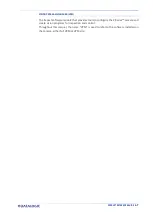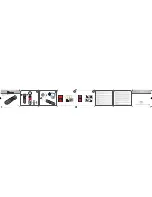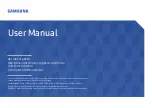
MAXIMUM LINE SPEED AND EXPOSURE TIME CALCULATIONS
PRODUCT REFERENCE GUIDE
35
Likewise,
T
exp
(max)
is the maximum
Shutter Open Time
value that can be used without
blurring for the given application line speed and part resolution. Therefore:
X / LS
(max)
= T
exp
(max)
T
exp
(max)
and
LS
(max)
are represented in the graph below as the curved line for
X
(part
resolution). Values above the curve result in blurring. In practice, the application values
are somewhere below the theoretical line, (in the green area), due to environmental
and other conditions.
For example, the maximum target speed in the application is also affected by these con
-
ditions:
•
Part/Background Contrast
: maximum speed decreases when decreasing image
contrast (poor quality images, reflective transparent coverings, different supports
and printing techniques).
•
Part Resolution
: maximum speed increases when decreasing code resolution, (i.e.
2X)
. There is a decrement of overlapping effects between two adjacent elements.
•
Tilt Angle
: maximum speed decreases when increasing Tilt angle (from 0 to 45
degrees).
T
exp
(min)
is the minimum
Shutter Open Time
value obtainable for the specific applica
-
tion. It can be evaluated in static conditions and depends on the P-Series™ camera hard
-
ware selected for the application (internal lighting system, optical lens, reading
distance) and on any external lighting system. It may also depend on image quality and
camera position.
The Internal Illuminator, which is adjusted in VPM – Settings – Camera, sets the internal
lighting system operating mode. The possible values are:
•
Disabled
: the built-in LED array is turned off all the time. This option can be useful
if using an external lighting system;
•
Normal
: the built-in LED array is turned on during the shutter open time at the
lowest power level.
•
Power
: the built-in LED array is turned on during the shutter open time at the
highest power level.
SW Limit
T
ex
p
T
exp (min)
SW/HW Limit
Readable
Blurring
Line Speed
Co
nv
ey
or
S
pe
ed
Li
m
it
X
2X














































